The bell is a magnificent herbaceous perennial with a modestly slotted head in front of enthusiastic glances. This flower dedicated to the set of one, songs and picturesque paintings. And its species diversity is simply impossible to describe: varieties, shades and shapes of buds of bells are incommens. One of the brightest representatives is the bell spot. We will talk about its features, growing conditions and methods of reproduction.
Bell Tile, Description
The sophisticated bell is a spot - famous East Asian handsome family of bells. His homeland is Japan, China, some regions of Korea. It is also distributed in Russia, namely, in the east, less often in Dauria. Natural habitat - river shores, birch, valley forests.
This type of bell tape is characterized by such botanical features:
- At the bell tape of a point stretching, high, sown stalk, with a height of 40-50 cm. Most of the hybrid varieties grows up to 70 cm. The top of the stem of the cylindrical shape, its structure is a branch-branching.
- The leaflets of the bell are numerous, on the touch they are hair, the lower part of the sheet plate is more pale. The root leaves of the ovoid shape, pointed at the ends, with a purple hue. Their length is 7-8 cm, width - no more than 4 cm. On the stem of the foliage egg-shaped, sitting, keeps on short stiffs.
- Inflorescences at the dotted bell is quite large and often reach 6 cm in the diameter. On one shoot, there may be up to 5 flowers, they are drooped, pubescent, hold on elongated flowerwomen.
- An elegant cup is littered with whiten hairs, as well as teeth with a red tip on the top, their lanceal shape. The appendages of the egg-shaped cup, the tips are bent.
- The magnitude of the bunny is 4-6 cm, it is a grooved shape, the center is slightly swollen, its dirty-milk color, with splashes of purple dots. Inside the bearded whisk, the blades are pointed, straight, several times higher than the size of the whin.
- The fruit of the dotted bell is a three-minute box that strongly disrupts, opening holes at its base. Flowers the bell from July to the first frosts, depending on the variety. Fruit culture in August-September.
Bell dotted, varieties
The bell point is infrequently found in the gardens. Among the most common and very beautiful varieties are allocated only a few bells.
Bell Totker Garland
The variety is quite compact, its height is not more than 40 cm. Buds bells, large, elongated, up to 8 cm in diameter. The flowers are numerous, grouped into inflorescences - metels.
Colors color saturated pink, with purple tide. The foliage and shoots of the bell strongly pubescent, their shade of light green with the Sizem pollination.
Bell dot pink-ed
This bell is pink point reaches 50 cm in height. Owned leaflets are placed on long crimping stiffs. The variety is one of the largest buds - 8-9 cm in the diameter.
Flowery shape is proportional, glazing. They are collected in the dowel inflorescences in the form of a panicle. A variety has long blossoms: from early July to autumn.
Bell Point Spectacle Sensaish
This is a small bush, which, with proper care, stretches at 45-55 cm in height. The grade foliage is small, with glossy coating, cutting powder, leaf canvas smooth, color bright green. Flowers are also small, traditionally dumped, glazing form, their color is purple with purple. Blossom lasts the entire summer season.
Bell Tool Silver Bells
Compact perennial up to 45 cm in height. Its feature is a highly developed root system, which allows the bell to grow rapidly. He quickly captures nearby sites, so it should be taken into account during the landing.
Stems Silver Bells Strengthening, foliage a large, heart-shaped ends, highly built-up, pubescent. Packers and numerous veins on bud - bright red. Middle size colors - 5-7 cm, their color is soft pink, with pearl and purple overflow.
Bell Pantaluns
Bushes are pulled up to 50 cm, variety flowers are very large, double, lilac-lilac color. Leafs are saturated green, glossy, medium size. Differs high winter hardiness.
Bell Spot Alba Nana
This bell is dotted - white, with a compact value of the bush, small leaves of the light green color of an oval shape with jar. Buds are large, elongated, placed on burgundy stiffs. Colors color - milk with pale strips in the tone of the cut.
Bell tile hot lips
The low-speed plant, the dimensions of which do not exceed 30 cm. Buds on the shallow coat are very large, warm pink color, the freckles of chocolate color are noticeable.
Leaves at hot lips are neat, small, heart-shaped. Their main color is grassy, \u200b\u200bamong which the veins are clearly visible to the Dark Color.
Growing the bell dotted from seeds
A common method of growing a bell tower - seed seeds to seedlings. They can be purchased or assembled from the existing bush. The process of growing is not laborious and if the seeds are fresh, you can get a good percentage of germination.
Important! After the bell spkeled spot, the seeds are collected until the seed box is discovered, which has already been painted in a brown color.
- If collected seeds are used, seed boxes are pre-dry, so that the seeds are easily poured. Before sowing seed, material is mixed with a small amount of sand. This greatly facilitates uniform sowing, since the seeds of the bells are very small.
- Seed seeds in two ways: immediately in the soil (spring and autumn) or seedlings. If the sowing is carried out on the garden, the Earth is screwed, frozen. In the spring period, landing works start in May, when the soil warmed up enough. The appearance of the first germs can be expected after 14-16 days.
- If sowing is held at the end of the autumn (it is better to do this in October), the seed plot is covered. With the arrival of spring, shoots sprout together. After a couple of weeks, the pigs are thinned, and after the formation of the third full-fledged leaf - dive.
- For growing strong seedlings, seeds are sown in the boarding boxes with fertile, loose soil. Made sowing in March. Capacity with sinking seeds is kept in a warm and bright room.
- Be sure to build a guy with a film or glass. Seedlings are regularly moisturized from the spray gun, while at the same time ventilating the greenhouse.
- No earlier appear than in 2 weeks. When there are 2-3 full-fledged sheet in the seedlings, it is divened to peat pots. The landing on the bed can be spent closer to June.
Landing a dotted bell in the ground
The landing work in the open ground is carried out at the turn of May and June. Most varieties of dotted bell is spotless. Bells, preferring shadow, literally units, and they recognize on the dark color of greenery.
Soil preparation and selection of space for point bell
Bells poorly tolerate drafts, wetlands, close sections, where the sunlight does not penetrate. They grow well on rocky soil, but preference is better to give a neutral, as a last resort of weakly alkaline earth. It should be lightweight, loamy, well-drained.
For the bell perfectly fit the elevations or hillocks. In such places, water quickly moves, without giving the root system of the bell to start or freeze.
Before planting a dotted bell, the soil is specifically prepared. A mixture of sand and humus pouring into the planting pit (if the soil is heavy) or the turf with fertilizers (if the soil is too poor).
Important! It is not recommended to enrich the earth with a fresh manure or peat: it creates favorable conditions for the development of fungal infections.
How to land a dot bell
The bell dock is planted away from high plantations (trees, shrubs) and buildings. This is necessary so that the root system of the plant can be able to freely develop, getting the required amount of moisture and the necessary minerals.
The distance between the bushes depends on the bell grade: for low grades - 10-20 cm, for medium bushes - 20-30 cm, for high instances - at least 50 cm.
Saplings are immersed in the pit, carefully placing the main root, then they sprinkle the earth, they fit it and conduct a generous watering.
Advice! After flowering the bell, the point dumps the greens and goes into a state of rest. Therefore, gardeners are recommended to plant soil ribbons around it.
Bell Tile, Care
This type of bell makes it easily at a new place, it blooms plentifully and does not ill, if it hits the moisture-rich soil, and does not require painstaking care.
Basic care in the garden behind the bell dotted
The bell acumen needs abundant watering during the period of bootonization and flowering, as well as hot and dry weather. In the rainy period, irrigated, it is important to control the full removal of water so that the root system does not suffer. In cold weather, watering is limited and the bells are watered only as needed.
Important! Flowers The bell dotted poorly develop on the swampy soil. At such a place, the plant often gets and dies.
For good aeration, the soil must often loose, get rid of weeds. Transplanting point bell is carried out more than once every five years. At this moment, the plant clearing the plant by dividing the bush.
Falker of bells is made early in spring. For this, a nitrogenous fertilizer is made on the talom snow. Then, during the actual formation of buds, the second feeder is carried out.
Advice! To extend the flowering, you need to remove faded flowers.
Point bell breeding methods
- The bell is multiplied by a spot not only seed, but also a vegetative method. The easiest way to get new plants is to divide the roots of a 4-5-year-old bush. In this way, all varietal signs of the parent plant are fully preserved.
- The rooting successfully passes and in the spring, and in the autumn period. In the spring, the bush is held at the time of young shoots, and in the fall - after dropping the leaves, but no later than mid-October, so that young bushes manage to root. In the autumn reproduction, the bush necessarily pruning the entire aboveground part.
- For breeding, the bush is drove and slowly removed. Rhizome is reproached from the Earth Koma, and then divided by a sharp knife. It is important to keep the kidneys and healthy roots on all deteen.
- New bushes planted in prepared wells. If the work is carried out in the spring, the growth kidneys are covered with a thin layer of sand. In the autumn period, the kidney is better to burst into the ground. After landing, the decene is watered, and in the autumn period - cover with a sweetheart.
Wintering bell dotted
By mid-October, the bloom of the bell stops and he drops the leaves. At this moment, seeds are collected, and then they cut the above-ground part.
Most varieties winter without shelter, but in the regions with a harsh climate it is better to cover the plant with a dry foliage of 20 cm. On this care for the bell is over.
Diseases and pests of a dotted bell
The bells are pointing in color - the extrapayment spectacle, from which it is impossible to break away, but this is not the only superiority of this culture. Bells can boast their immunity to disease and pests.
- The bell tape can be ill in exceptional cases, for example, if many years have not been transplanted for many years. This leads to the development of pathogenic flora and diseases - fuzarium, sclerotini, as well as Botritis. For prophylaxis and treatment, it is necessary to process the bushes with a 0.2% solution of Fundazola. You need to do it twice - in spring and autumn.
- From the pests on the bells, you can notice the incompetent Pennica, which appears in conditions of high humidity. A concentrated infusion of garlic helps to get rid of the pest. Low grades are often damaged by slugs. To preserve the bells, you can spray them with infusion of bitter pepper.
The bell color is often used to decorate the garden. It is beautiful in numerous landings of bells of different varieties, suitable for creating alpine slides and decorative flower beds. With proper care, this handsome will become a real highlight of your site, making it bright, exquisite and multipoint.

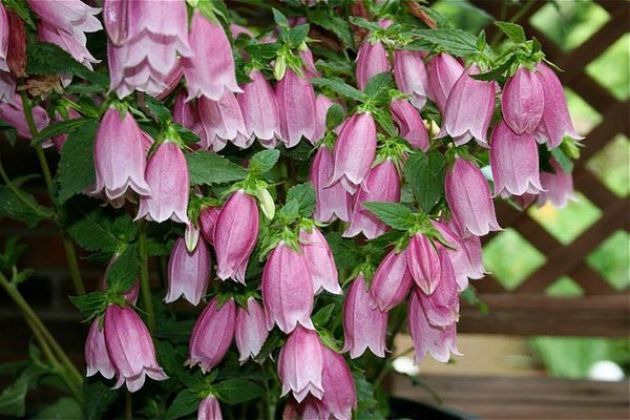
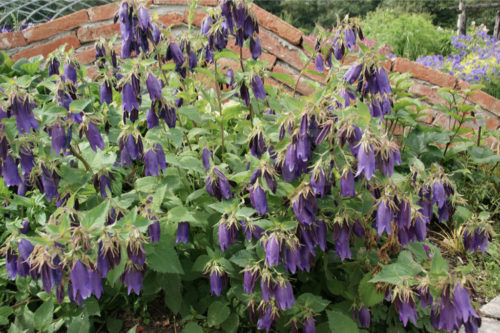
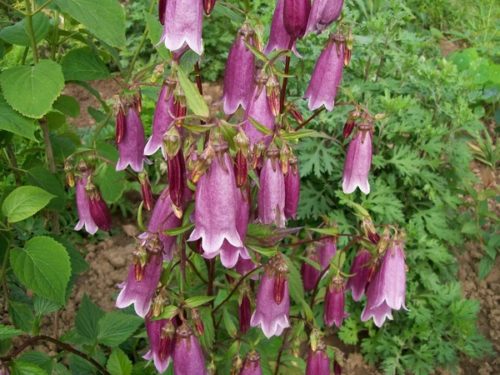

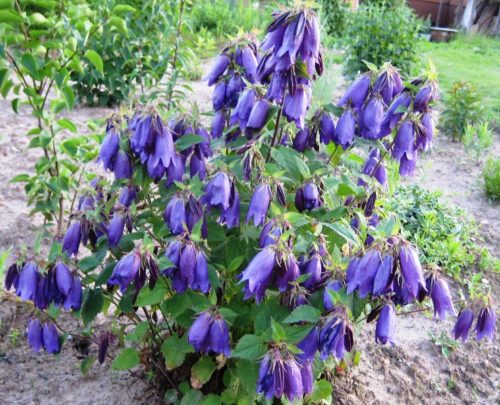
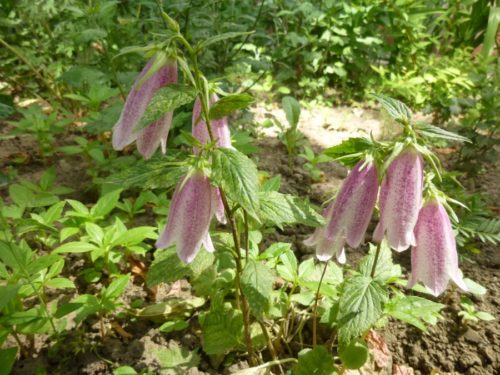
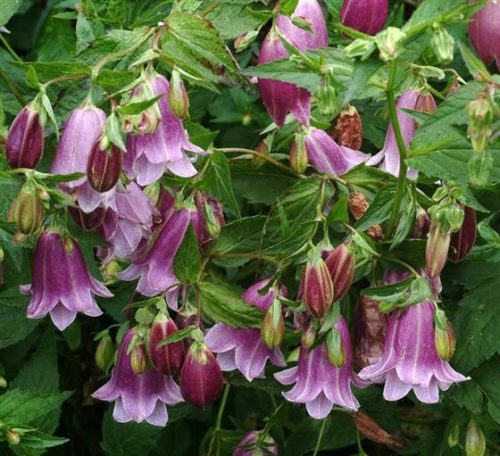

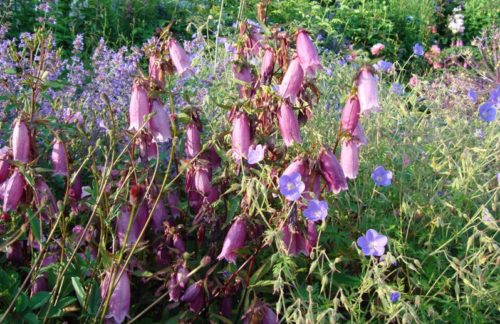
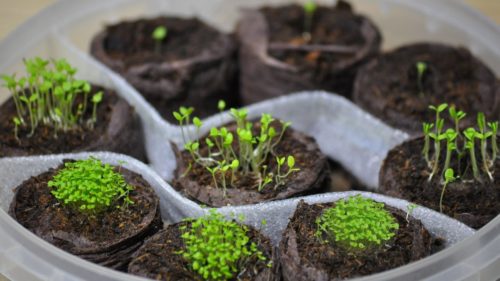
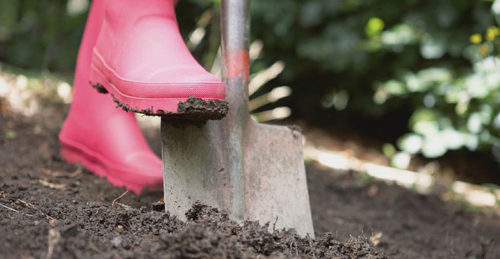

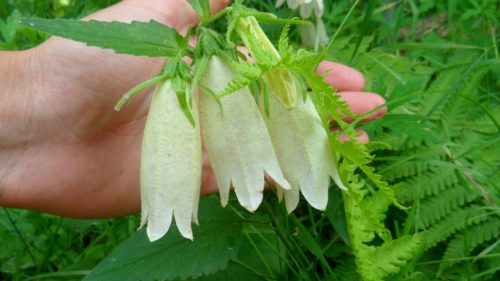
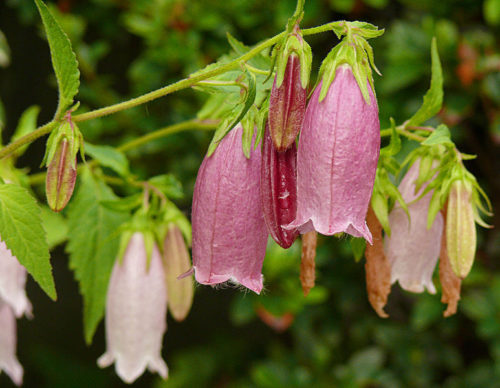
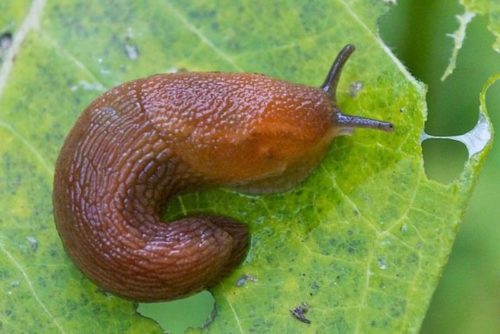
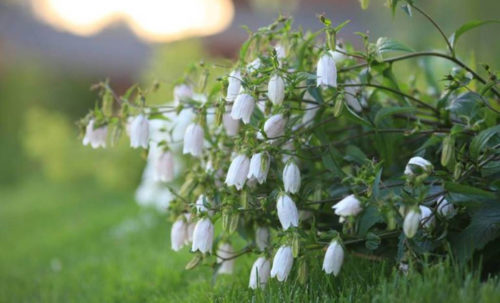
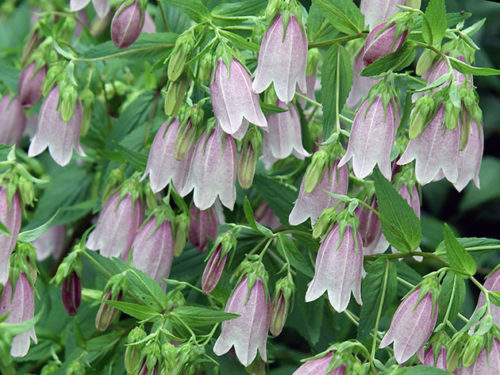

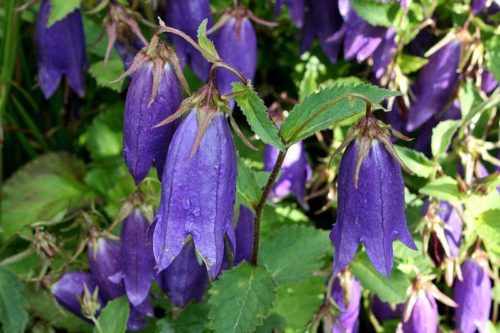
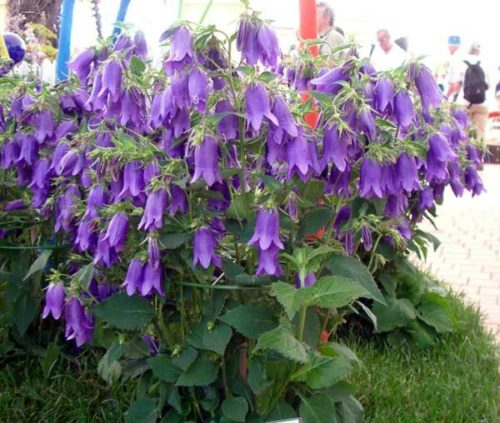
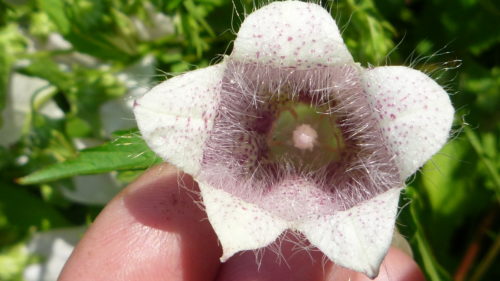
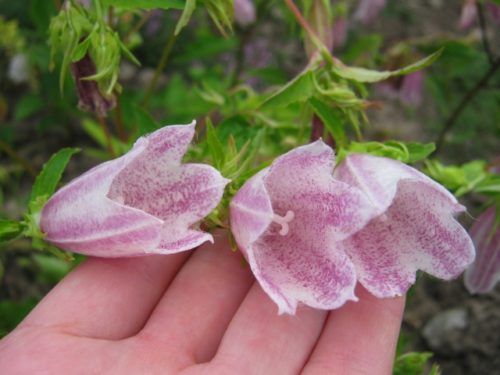












 Start a discussion ...
Start a discussion ...